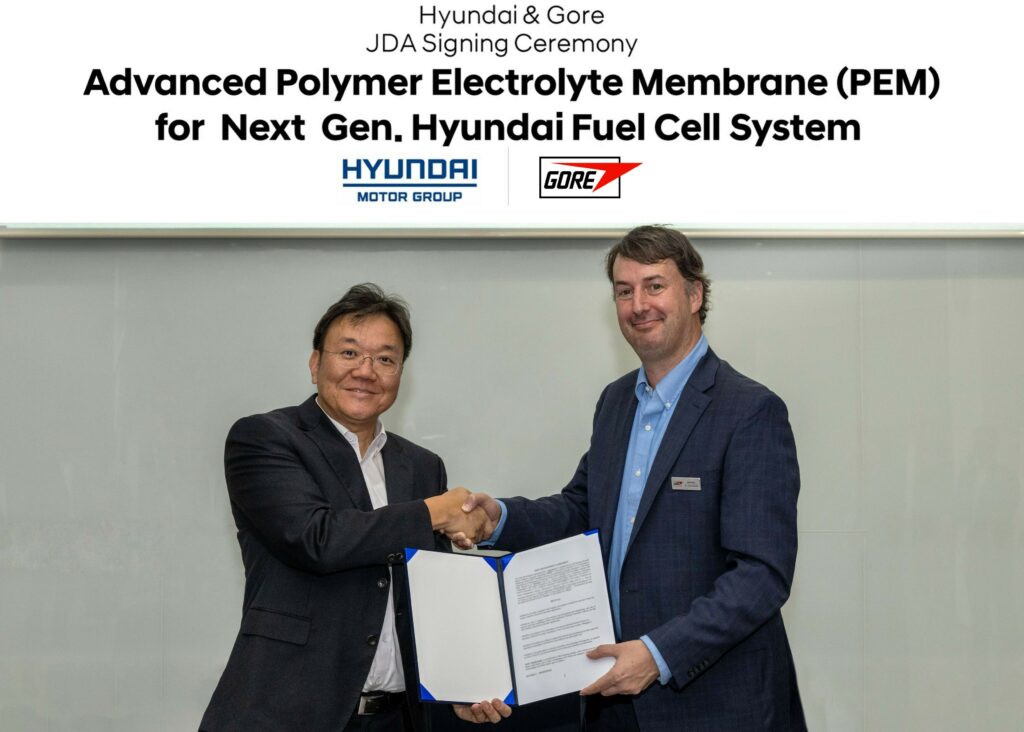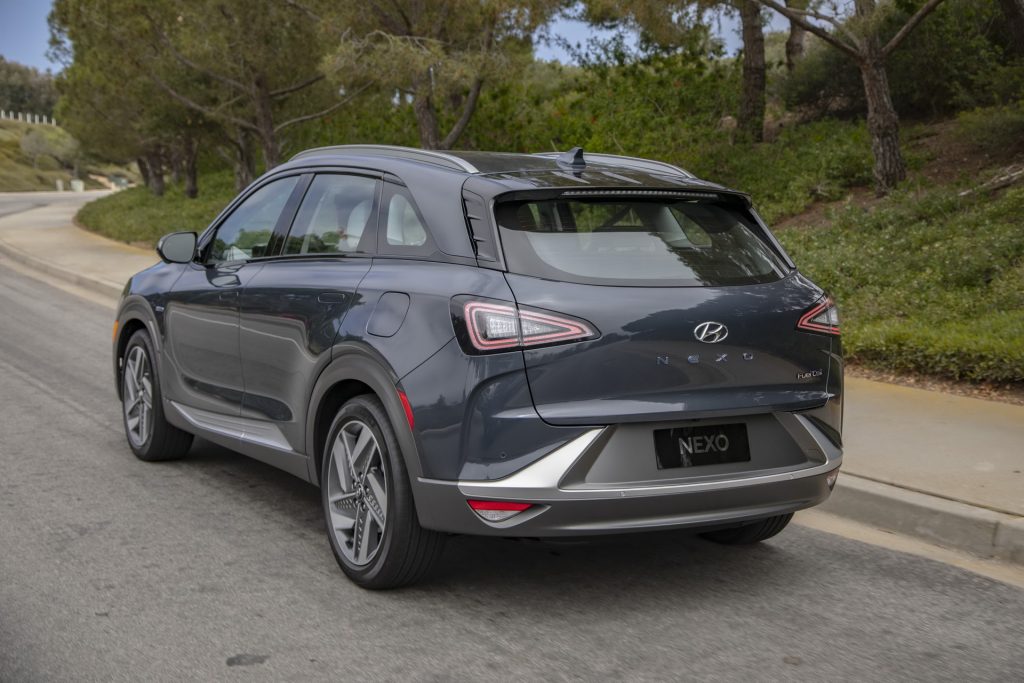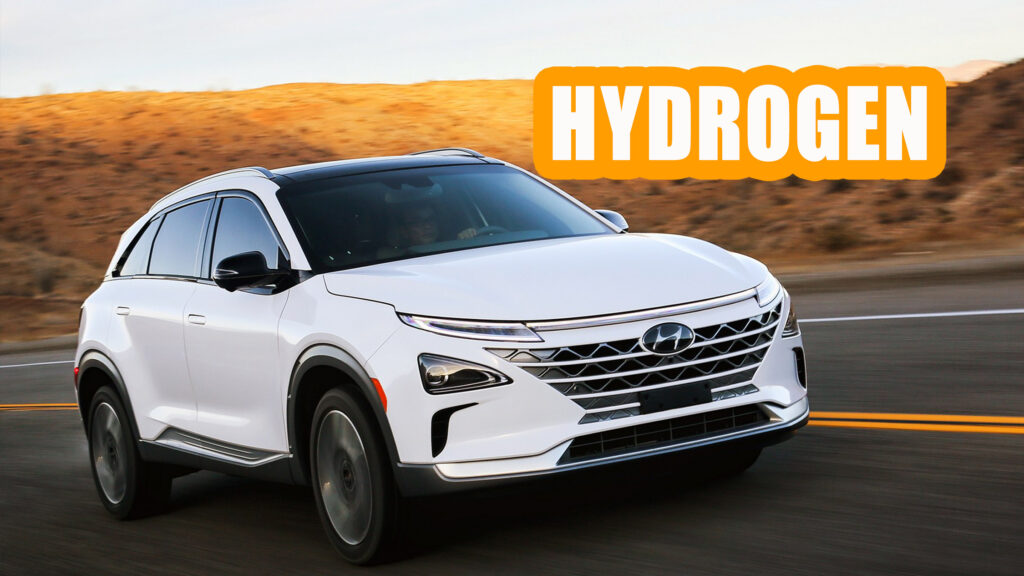While many legacy carmakers are going all-in on battery-electric vehicles over the coming decade, Hyundai and Kia still believe there is a future for hydrogen fuel-cell vehicles. As such, they have just partnered with W.L. Gore & Associates and signed an agreement at the Mabuk Eco-Friendly R&D Center, Korea, to develop new advanced polymer electrolyte membranes (PEM) for fuel cell vehicles.
Current hydrogen fuel cells use PEM to conduct protons between two electrodes. They are also used to block incoming hydrogen and oxygen gases from combining and are responsible for generating the electrical current needed to power a vehicle.
The two car manufacturers have been working with Delaware-based PEM experts Gore for more than 15 years. Their partnership will now more keenly focus on jointly developing an optimal fuel cell system for commercial vehicles to improve performance and durability. Gore doesn’t just have expertise in PEM but is also well-versed in catalyst-coated Membrane and MEA (Membrane Electrode Assembly) technology.

While most of Hyundai’s press release detailing the partnership focuses on commercial vehicles, it does note that the firm’s partnership also “aims to incorporate advanced PEM technology into next-generation fuel cell systems for passenger cars…and non-automotive sectors.”
Read: Hyundai Will Build 100 Examples Of N Vision 74, Report Claims
“We are entering the next chapter of our partnership with Gore,” Hyundai and Kia head of battery development and hydrogen and fuel cell development, Chang Hwan Kim said. “By leveraging the 15 years of collaboration, we will acquire advanced fuel cell technology and lead the fuel cell electric vehicle market, accelerating the movement towards a sustainable future.”
The most well-known hydrogen vehicle currently produced by Hyundai is the Nexo and while it only sells in small numbers, work is underway on a next-generation model.




